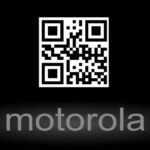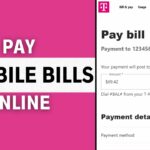If you’ve received a suspicious or unexpected text message from a 5- or 6-digit number—known as a short code—you are looking for a reliable way to perform a free short code lookup.
The best and most reliable tool for performing a free text message short code lookup is the official U.S. Short Code Registry, which is maintained by the Common Short Code Administration (CSCA).
This article will guide you through the official, free lookup process and provide actionable steps to verify the legitimacy of any short code sender.

-
What is a Short Code and Why Do You Need to Look it Up?
A short code is a 5- or 6-digit phone number used by businesses, organizations, and carriers for high-volume, automated messaging. They are primarily used for:
- Marketing Campaigns: Text “SALE” to 55555 for coupons.
- Two-Factor Authentication (2FA): Sending security codes from banks, Google, or social media sites (e.g., code 332211 from Google).
- Transactional Alerts: Delivery notifications, banking alerts, or appointment reminders.
You need to look up a short code owner to verify legitimacy and determine if the message is a legitimate alert or a “smishing” (SMS phishing) scam.
-
The Official Free Short Code Lookup Tool (U.S. & Canada)
For the United States and Canada, the official registry provides the identity of the company that leased the short code.
Step-by-Step Lookup Using the Official Registry
- Access the Registry: Go to the official S. Short Code Registry website: https://www.usshortcodes.com/find-short-code
- Enter the Code: In the search field (labeled “Type Your Select Short Code”), enter the 5- or 6-digit number you want to look up.
- Search: Click the search button.
- Analyze the Results: The search result will display information about the short code, including:
- Leasing Company: The company that owns the short code (e.g., Amazon, Starbucks, a specific financial institution).
- Program Name: The name of the campaign or service the code is used for (e.g., “Macy’s Customer Service Alerts”).
- Contact Information: In some cases, a contact number or email address for the program.
International Short Code Lookup
If the text originates from outside the U.S. or Canada, the U.S. Registry will not have the information. You will need to check the local registry for that region:
- Canada: Refer to resources maintained by the Canadian Wireless Telecommunications Association (CWTA), often found at https://www.txt.ca.
- Other Countries: Search for the country’s specific “short code registry” or check with your mobile carrier.
-
How to Verify the Sender and Stop Scams
Even if the short code appears in the registry, follow these rules to protect yourself from smishing scams:
| Verification Action | Details |
| DO NOT CLICK SUSPICIOUS LINKS | Legitimate companies will rarely send links asking you to log in or confirm personal information via text. If the link looks suspicious (jumbled letters, misspellings), do not tap it. |
| DON’T REPLY to Unknown Codes | Replying with anything other than STOP confirms your number is active and may lead to more spam. |
| Verify Independently | If a text from a short code claims to be your bank or Amazon, do not use the contact info in the text. Instead, call the institution using the official number from their website or the back of your credit card. |
| Text STOP | If the short code is sending marketing messages you no longer want, reply with the word STOP. This is the universal and legally mandated opt-out command for short codes in the US and Canada. |
Frequently Asked Questions
What should I do if a short code is not in the registry?
If a 5- or 6-digit code does not appear in the official U.S. Short Code Registry, it may be a newer number, a number used for testing, or a long code (a standard 10-digit number disguised in some text services). Treat any message from an unidentifiable short code as highly suspicious: do not interact with it and report it to your carrier by forwarding the text to 7726 (SPAM).
Can scammers spoof (fake) a legitimate short code?
It is very difficult for individual scammers to successfully spoof an official, registered short code, which makes the short code registry a reliable source for identity verification. Scammers usually rely on using standard 10-digit phone numbers, disguised names (Alphanumeric Sender IDs), or long, suspicious links to commit fraud.
Do I get charged when I text a short code?
Most short codes used by major companies for marketing, alerts, and 2FA are free to the end-user (FTEU). However, if you are on an older pay-per-text plan, you might be charged. Check the terms of your service, but generally, texting STOP or receiving messages from major corporate short codes is free.


